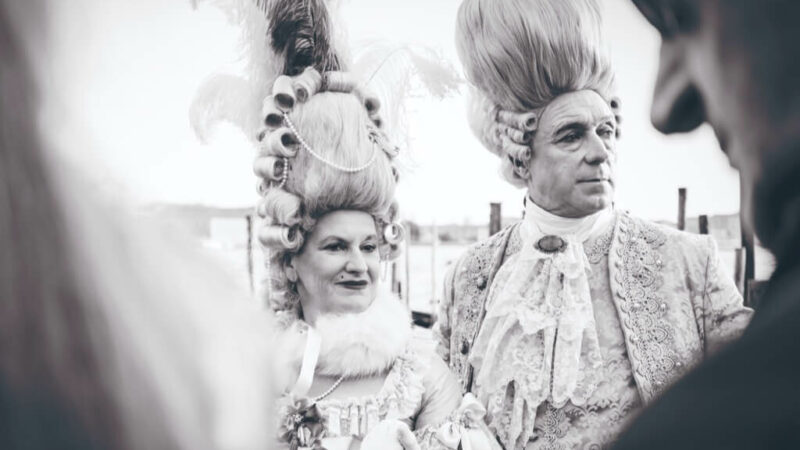Andy Warhol’s Moon Art Speculation

The Apollo missions, spanning from 1969 to 1972, are heralded as one of humanity’s greatest technological achievements. These missions, apart from achieving the extraordinary feat of landing humans on the Moon and bringing them safely back to Earth, also left behind a remarkable assortment of equipment and objects on the lunar surface. Among these items, a tiny yet significant artifact stands out: the Moon Museum, a small ceramic chip bearing artworks from some of America’s most notable artists, encapsulated within the gold mylar of Apollo 12’s Lunar Module Intrepid.
Space exploration and art have been intertwined since the early days of the space age. The Soviet Union’s Luna 2 probe, which made history in 1959 as the first human-made object to touch another celestial body, carried metallic pennants showcasing Soviet symbols. Similarly, the Apollo 11 mission left behind symbolic items, including a gold olive branch and a stainless-steel plaque with Earth’s depiction and dignitaries’ signatures. But these were government-endorsed symbols. The Moon Museum, in contrast, was a product of independent artistic expression.
American artist Forrest Myers noted for his monumental sculptures, spearheaded the Moon Museum project in 1969. He invited fellow artists to contribute, resulting in a collection of six sketches: Myers’ “Interconnection,” Robert Rauschenberg’s minimalist line, David Novros’ black square with white lines, Claes Oldenburg’s Mickey Mouse interpretation, John Chamberlain’s geometric pattern, and Andy Warhol’s controversial sketch. Warhol claimed his drawing represented his initials in a rocket-like formation, though the interpretation remains debated.
These artworks were miniaturized onto a ceramic wafer using integrated circuit technology by Fred Waldhauer at Bell Laboratories. Despite Forrest Myers’ efforts to gain NASA’s official endorsement, the agency’s indecision led him to take a covert route. Through connections at Grumman Aircraft, the Moon Museum was clandestinely incorporated into Apollo 12’s Lunar Module. This act of smuggling, while common among Grumman technicians, was against regulations and carried the risk of severe repercussions.
On November 12, 1969, Myers received a cryptic telegram confirming the successful inclusion of the Moon Museum on the Apollo 12 mission. This secretive operation culminated in the Apollo 12 crew’s lunar landing on November 19, though the true presence of the Moon Museum on the Moon remains unverified. The identity of “John F.,” the technician responsible for this act, is still shrouded in mystery, with speculations linking the pseudonym to President John F. Kennedy, a key figure in the Apollo program’s inception.
The Apollo missions continued to intertwine art with space exploration. In 1971, Apollo 15 Commander David Scott placed “Fallen Astronaut,” a sculpture by Dutch artist Paul van Hoeydonck, on the Moon, commemorating astronauts and cosmonauts lost in the pursuit of space exploration. Interestingly, Apollo 12 contributed another form of “art” to the lunar surface. Astronauts Pete Conrad and Alan Bean had mission checklists with unexpected additions: images of Playboy Playmates, courtesy of backup crew members David Scott and James Irwin. These cheeky inclusions represent a lighter, more human aspect of the otherwise technologically driven Apollo missions.
Tribute to Apollo 11
One of Warhol’s remarkable endeavors was the creation of the Moonwalk series. This series was not just a random artistic expression but a profound tribute to a historic moment in human history. In 1969, when the world watched in awe as Apollo 11 astronauts set foot on the Moon for the first time, Warhol was inspired to capture this monumental event through his art. The Moonwalk series was his way of commemorating the Apollo 11 mission, which marked a giant leap for mankind.
Warhol’s Unique Approach to Art
Andy Warhol’s approach to art was distinct. He didn’t confine himself to traditional mediums; instead, he explored various sources for his creative inspiration. He used his photographs and images from magazines, advertisements, and publicity materials in his work. This eclectic approach allowed him to bring a unique perspective to his art, including the Moonwalk series.
The Moon as a Symbol in Art
The Moon has held a special place in art throughout history. It symbolizes mystery, magic, introspection, and renewal. Its ever-changing phases have fascinated artists and storytellers, embodying a sense of romanticism and intrigue. Warhol’s decision to create art inspired by the Moon adds to the long tradition of artists finding inspiration in celestial bodies.
The Moon Museum
While Warhol’s Moonwalk series is a testament to his fascination with the Moon, there’s another intriguing connection between art and space exploration—the Moon Museum. Conceived by artist Forrest “Frosty” Myers, the Moon Museum aimed to place contemporary artworks on the Moon. Despite NASA’s non-committal stance, this unofficial art gallery, with its ties to space exploration, serves as a testament to the enduring relationship between art and the cosmos.
The Influence of Pop Culture
The topic of how pop culture, including the work of artists like Andy Warhol, has influenced space exploration is a rich and debatable subject. Beyond the humorous myth of Warhol leaving a provocative image on the Moon, it can be argued whether pop culture’s impact on space missions has been positive or negative. Some may contend that it fosters public interest and engagement, while others might argue that it distracts from the scientific and serious aspects of space exploration.
Art and Its Role in Shaping History
This topic delves into the broader issue of how art, including speculative art such as the Moonwalk series, can shape historical narratives. The debate can revolve around the question of whether artistic interpretations of historical events, even when humorous or speculative, have a legitimate place in shaping how we perceive the past. Some may argue that art adds depth and dimension to history, while others may contend that it risks distorting factual accounts.
Ethics and Legality of Lunar Artifacts
The inclusion of artworks on the Moon, as exemplified by the Moon Museum project, raises ethical and legal questions. This debate could explore the ethical implications of placing art on celestial bodies and whether it’s respectful of the sanctity of space. Additionally, the discussion can address the legal aspects, such as whether the inclusion of art on lunar missions complies with international space treaties and agreements.
Art as a Medium for Political Expression
Considering the Moonwalk series and the Moon Museum, the question of whether art can be used as a medium for political expression in space arises. This debate may focus on whether artists, through their creations, can convey political messages or statements on a global scale. Some may argue that space art can serve as a platform for advocating for political causes, while others may argue that space missions should remain neutral in their objectives.
The boundary between factual accounts and speculative narratives in the context of space exploration is a contentious topic. The myth surrounding Andy Warhol’s Moon artwork highlights this issue, as it blurs the line between fact and fiction. The debate can delve into the consequences of such blurring and whether it impacts public understanding and trust in space missions. Some may argue that it adds a sense of wonder, while others may argue that it muddles the distinction between science and fiction in space discourse.
In the realm of lunar exploration and artistry, the persistent myth surrounding an artwork left on the Moon by Andy Warhol invites us to delve into the fascinating intersection of imagination and history. While the claim itself remains unsubstantiated, it serves as a testament to the enduring allure of the cosmos and the enduring legacy of Warhol’s artistic contributions.



